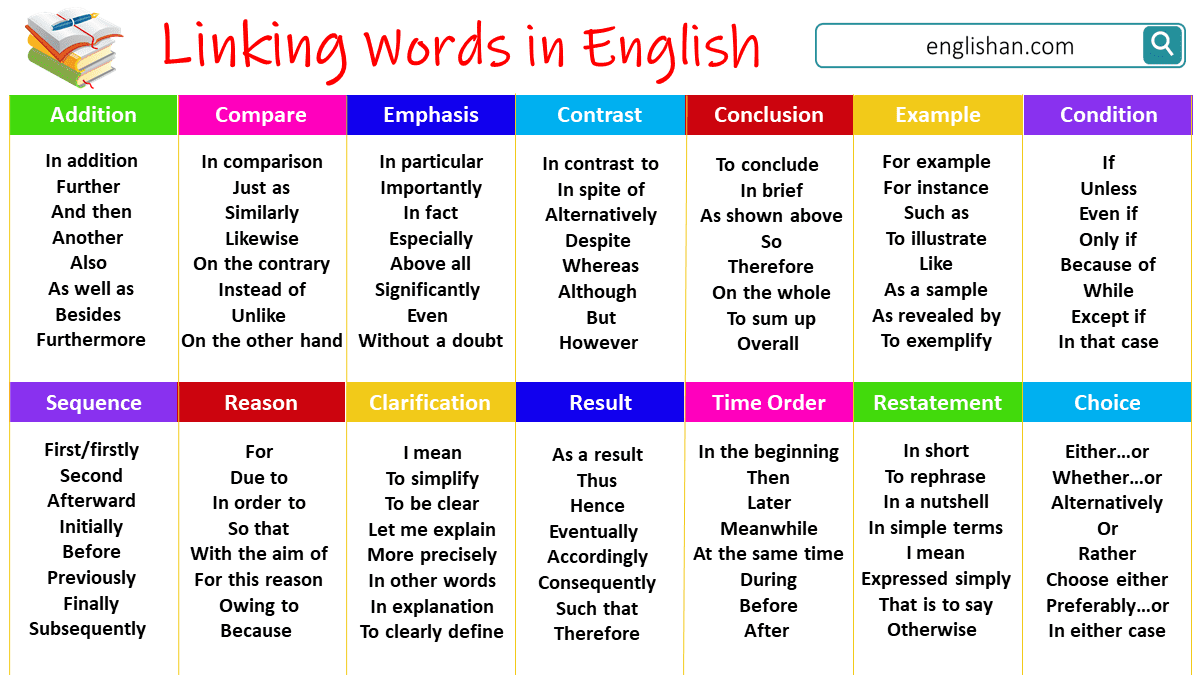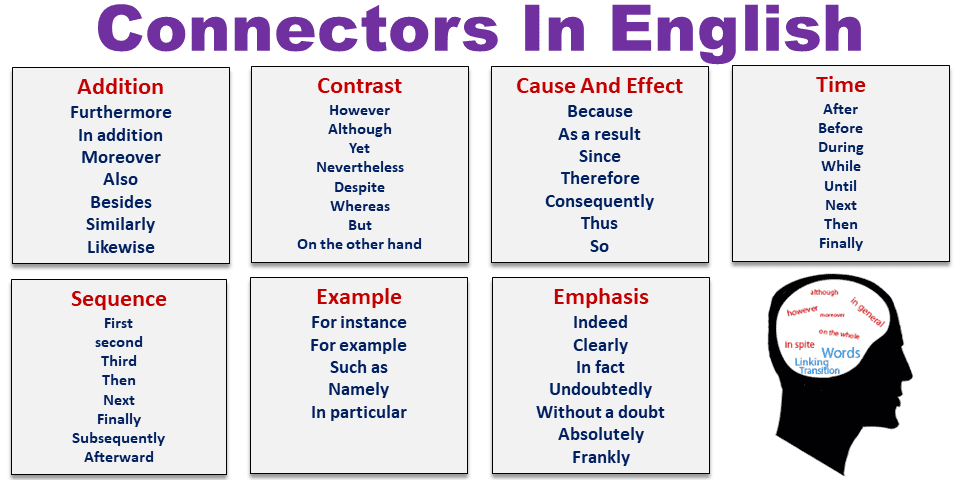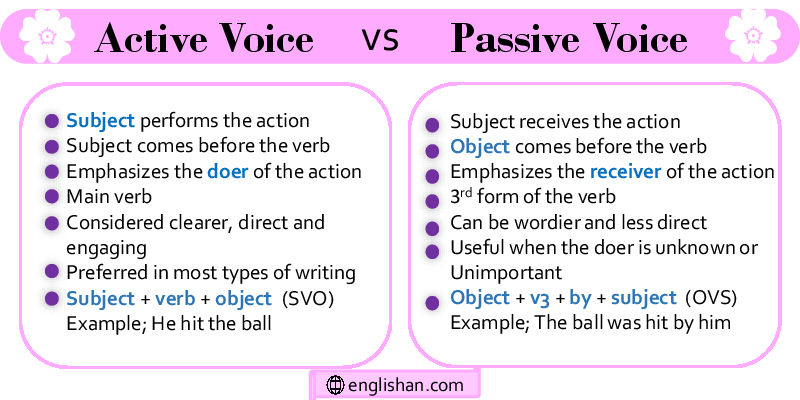Contents
Clauses are a group of words that contain a subject and a predicate. In English, there are various types of clauses, and the adverbial clause is one of them. As the name suggests, an adverbial clause performs the same function as an adverb in a sentence. It modifies a verb, an adjective, or another adverb in the main clause. It can indicate time, place, reason, condition, purpose, contrast, and concession. These clauses often begin with subordinating conjunctions such as “when,” “where,” “because,” “if,” “in order that,” “although,” and “even though.” Understanding adverbial clauses is crucial for creating well-structured and grammatically correct sentences in English. In this article, we will explore adverbial clauses in detail with clear examples to help you better understand their usage types and functions in a sentence. So let’s get started!
What Is an Adverbial Clause?
An adverbial clause is a dependent clause that functions as an adverb within a sentence. It serves to modify verbs, adjectives, adverbs, or entire clauses by providing additional information about when, where, why, how, or to what extent an action or situation occurred. Adverbial clauses are introduced by subordinating conjunctions and typically begin with words like “when,” “where,” “because,” “although,” “if,” and “since”, which establish the relationship between the main and subordinate clauses. These clauses can be categorized into various types based on their specific roles, such as time, place, reason, purpose, condition, comparison, concession, or manner. They can appear at the beginning, middle, or end of a sentence and are punctuated accordingly. Adverbial clauses are essential for adding depth, context, and clarity to sentences, enabling writers and speakers to convey precise meanings and relationships between different parts of their statements. For instance;
- She studied hard so that she could pass the exam.
Here the adverbial clause “so that she could pass the exam” indicates the purpose or goal of the action (studying hard). It explains why the action was performed.
- I’ll call you when I get home.
In this sentence clause “when I get home” provides information about when the action (calling) will occur. It specifies the time of the action, indicating that the call will happen at the moment the speaker arrives home.
- If it rains, we’ll stay at home.
The adverbial clause “if it rains” introduces a condition that must be met for the main action (staying at home) to take place. It answers the question “Under what circumstances?” and introduces a conditional scenario.
How to Use Adverb Clauses?
Using adverbial clauses effectively involves understanding their purpose, structure, and placement within a sentence. Here are some guidelines on how to use them appropriately in your writing or speech:
Function in a Sentence
As mentioned earlier adverbial clauses are used to provide additional information about actions in a sentence. They often answer questions like “When?” “Where?” “Why?” “How?” or “Under what conditions?” They add depth and context to sentences and can significantly affect the meaning of the main clause.
Identify the Purpose
Determine the specific type of adverbial clause you need based on the information you want to convey. Is it about time, place, manner, reason, condition, or purpose? Each type serves a different function, so choose the appropriate one for your context.
Understand Clause Structure
Adverbial clauses begin with a subordinating conjunction (e.g., “when,” “if,” “because”) and contain a subject and a verb. The subordinating conjunction connects the adverbial clause to the main clause.
Example:
- If you study hard (adverbial clause), you will pass the exam (main clause).
Position the Adverbial Clause
Adverbial clauses can appear at the beginning, middle, or end of a sentence, depending on the specific subordinating conjunction used and the intended emphasis. When they begin a sentence, they are often followed by a comma.
Example:
- Beginning: After I finish my work, I will go to the gym.
- Middle: I will go to the gym when I finish my work.
- End: I will go to the gym after I finish my work.
Punctuate Correctly
Punctuation: When adverbial clauses begin a sentence, they are often followed by a comma. However, when they appear at the end of a sentence, they usually don’t require a comma unless they are essential for clarity.
Example:
- After the rain stopped, we went for a walk. (comma)
- We went for a walk after the rain stopped. (no comma)
Choose the Right Subordinating Conjunction
Use an appropriate subordinating conjunction like “when,” “where,” “how,” “because,” “if,” or “so that” to introduce the adverbial clause.
Example:
- I’ll call you when I arrive.
Types of Adverbial Clauses
Adverbial clauses can be categorized based on the type of information they provide and their relationship to the main clause. Here are some common types:
Time Clause
These clauses indicate when an action took place or will take place. They are introduced by subordinating conjunctions like “when,” “while,” “as,” “before,” “after,” and “since.”
Example: I will call you when I get home.
Place Clause
These clauses specify the location or place where an action occurs. They are introduced by subordinating conjunctions like “where,” “everywhere,” and “anywhere.”
Example: She looked for her keys where she usually keeps them.
Manner Clause
These clauses describe how an action is performed. They are often introduced by subordinating conjunctions like “as if,” “as though,” “like,” and “the way.”
Example: He danced as if no one was watching.
Reason Clause
These clauses provide the reason or cause for an action. They are introduced by subordinating conjunctions like “because,” “since,” “as,” and “for.”
Example: She left early because she had an appointment.
Conditional Clause
These clauses express a condition that must be met for the main action to occur. They are introduced by subordinating conjunctions like “if,” “unless,” “provided that,” and “in case.”
Example: I’ll go to the party if I finish my work on time.
Purpose Clause
These clauses indicate the purpose or intention behind an action. They are introduced by subordinating conjunctions like “so that,” “in order that,” and “to.”
Example: She studied hard so that she could pass the exam.
Contrast Clause
Contrast clauses show a difference or contrast with the action in the main clause. Common subordinating conjunctions for contrast clauses include “although,” “though,” “while,” “whereas,” “but,” etc.
Example: She wanted to go out, although it was raining heavily.
Adverbial Clauses vs Adverbial Phrases
Although they both modify verbs, adjectives, or adverbs, but they differ in structure. Adverbial clauses are groups of words containing a subject and verb that act as adverbs within a sentence. They’re introduced by subordinating conjunctions (e.g., “when,” “if,” and “because”). Adverbial phrases, on the other hand, are groups of words that function as adverbs but lack a subject-verb relationship. Instead, they are made up of prepositions and their objects, adverbs, or other modifiers. Adverbial clauses provide more information and can stand alone as sentences, while adverbial phrases offer more concise details and cannot stand alone. For example, “Because he was tired” is an adverbial clause, while “In the morning” is an adverbial phrase.
Examples of Adverbial Clauses
- Before sunrise, he woke up.
- Before dinner, I went for a walk.
- Wherever you go, I’ll follow.
- She left the keys where I could find them.
- Wherever they go, they have fun.
- He ran as fast as he could.
- She smiled as though nothing was wrong.
- If it rains, we’ll stay at home.
- Although it’s cold, I’m going for a swim.
- He exercised to stay healthy.
- Because he was late, he missed the bus.
- Although he studied hard, he didn’t pass the test.
- She studied hard so she could pass the test.
- Although he tried hard, he couldn’t win.
- She bought a gift for the party.
FAQs:
An adverbial clause is a group of words that functions as an adverb in a sentence. It provides information about how, when, where, why, or to what extent an action in the main clause is performed.
An adverbial clause is a group of words with a subject and a verb that functions as an adverb. An adverbial phrase, on the other hand, is a group of words that functions as an adverb but lacks a subject and a verb. For example, “in the morning” is an adverbial phrase, while “when I wake up” is an adverbial clause.
Adverbial clauses are often separated from the main clause by a comma when they appear at the beginning of a sentence. However, if it follows the main clause and is not essential to the sentence’s meaning, it can be separated by a comma as well.
They can be categorized based on their function. Some common types include time clauses (when, while, as soon as), place clauses (where), manner clauses (how), condition clauses (if, unless), purpose clauses (so that, in order that), and reason clauses (because, since).
No, they cannot stand alone as a complete sentence because it is dependent on a main clause to provide its meaning. It needs the main clause to make sense.
1. Because it was raining, we stayed indoors. (Reason)
2. She sang beautifully although she was nervous. (Contrast)
3. He’ll call you when he gets home. (Time)
4. I went to the store where I usually buy groceries. (Place)
5. I’ll call you if I have any questions. (Condition)
Restrictive adverbial clauses are essential to the sentence’s meaning and are not set off by commas. Non-restrictive adverbial clauses provide additional information but can be removed from the sentence without changing its core meaning and are set off by commas.
You May Also Like







